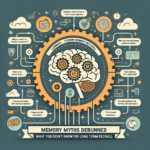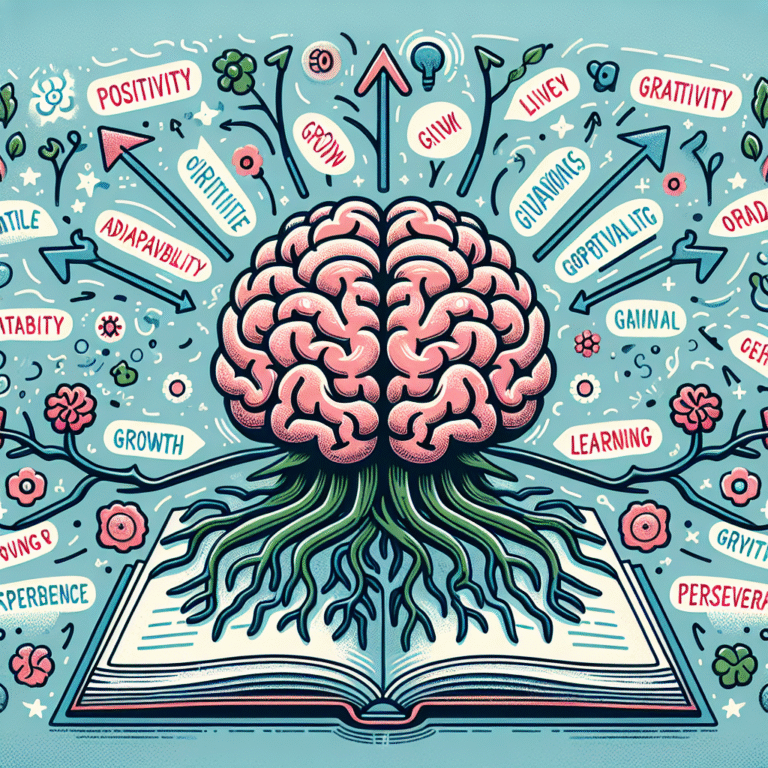
Introduction
In today’s fast-paced world, where stressors lurk around every corner, the need for effective mental health strategies has never been more critical. Schools, once viewed merely as institutions for academic excellence, are evolving into sanctuaries of holistic development. Enter mindfulness in education: a revolutionary tool that transcends the boundaries of traditional teaching and nurtures students’ mental health and overall well-being. Picture a classroom where students are not only learning algebra and history but are also developing profound awareness of their thoughts, emotions, and environment. This approach is transforming the educational landscape, fostering resilience, empathy, and emotional regulation.
Just as a sturdy foundation is crucial for a building, integrating mindfulness into education provides an essential base for students to flourish mentally and emotionally. In this article, we will explore “Mindfulness in Education: A Tool for Mental Health and Well-Being” in depth, revealing how this practice is reshaping lives, enhancing emotional intelligence, and fortifying mental health among students.
The Foundations of Mindfulness in Education
What is Mindfulness?
Mindfulness is often described as the psychological process of paying attention to the present moment, non-judgmentally. This practice encourages individuals to be aware of their thoughts, emotions, and sensations without reacting impulsively. Essentially, mindfulness involves cultivating a sense of awareness that is both focused and accepting.
Historical Context and Evolution
Historically rooted in Buddhist practices, mindfulness has made its way into Western psychology and educational frameworks, gaining traction in the late 20th century. The proliferation of research demonstrating the benefits of mindfulness for mental health has propelled its adoption in schools.
Importance of Mental Health in Educational Settings
With rising concerns about mental health among students, the integration of mindfulness becomes paramount. Research shows that one in five children experiences mental health challenges by the time they reach adulthood. This staggering statistic underscores the urgency of innovative approaches like mindfulness in education to safeguard students’ emotional and psychological well-being.
The Benefits of Mindfulness in Education
Enhancing Emotional Regulation
One of the significant advantages of mindfulness in education is its ability to improve emotional regulation. By teaching students to acknowledge their feelings and respond thoughtfully rather than reactively, mindfulness equips them with skills that are essential in both their personal and academic lives.
Case Study: Mindfulness Programs in Schools
The Inner Explorer Program has been piloted in various schools across the United States, demonstrating remarkable improvements in emotional awareness among students. Evaluations indicated that after participating in the program, students showed a 30% reduction in disruptive behaviors and an increase in emotional resilience. This case illustrates how structured mindfulness programs can create a more harmonious classroom environment.
Boosting Academic Performance
Mindfulness not only benefits mental health but also enhances academic performance. Research has found that students who practice mindfulness display improved focus, decreased mind-wandering, and enhanced cognitive skills.
Case Study: The Effect of Mindfulness on Test Scores
A study conducted at the University of California found that students participating in mindfulness training experienced a 16% increase in test scores compared to their peers. These findings suggest that mindfulness cultivates an academic atmosphere conducive to learning, emphasizing its dual role in mental health and academic success.
Building Empathy and Compassion
Mindfulness practices have been shown to foster empathy and compassion in students. As students learn to be more aware of their own feelings, they become more attuned to the emotions of others, promoting better interpersonal relationships and a stronger sense of community.
Case Study: Compassion Buddies Program
The Compassion Buddies Program pairs students together with the aim of fostering empathy through guided mindfulness exercises. Results have shown participants reporting a 40% increase in feelings of connectedness and altruism towards their peers, suggesting that mindfulness can enhance social bonds and emotional intelligence.
Implementing Mindfulness in Education
Practical Strategies for Educators
Educators looking to implement mindfulness can start small. Here are some practical strategies:
Mindfulness Minutes: Reserve a few minutes at the beginning or end of the class for mindfulness exercises such as deep breathing or mindful listening.
Mindful Breaks: Encourage students to take short mindful breaks during study sessions, promoting relaxation and focus.
Curricular Integration: Incorporate mindfulness activities into existing subjects, such as reflecting on emotions during literature discussions.
- Mindfulness Spaces: Create a designated calm area in the classroom where students can practice mindfulness when feeling overwhelmed.
Overcoming Challenges
While integrating mindfulness into education offers many benefits, some challenges exist. Resistance from educators or the misconception that mindfulness is merely “fluff” can hinder its implementation.
Education on the scientific benefits of mindfulness, clear communication with stakeholders, and ongoing training for educators can help overcome these obstacles, ensuring mindfulness in education becomes a sustainable practice.
The Impact of Technology on Mindfulness in Education
Mindfulness Apps and Platforms
The proliferation of technology has led to the development of various apps designed to facilitate mindfulness practices among students. Apps like Headspace and Calm offer guided meditations tailored for young audiences, enhancing accessibility to mindfulness resources.
Blending Mindfulness with E-Learning
With the rise of e-learning, integrating mindfulness into online curricula has become increasingly relevant. Educators can create digital mindfulness activities interspersed within virtual lessons, helping students maintain focus and emotional well-being, regardless of the learning environment.
Table: Popular Mindfulness Apps for Students
| App Name | Features | Target Audience |
|---|---|---|
| Headspace | Guided meditations, sleep aids | All ages |
| Calm | Mindful breathing, sleep stories | All ages |
| Stop, Breathe & Think | Interactive meditations, emotional check-ins | Children & teens |
| Smiling Mind | Mindfulness programs tailored for kids | Young audiences |
Case Studies in Mindfulness Implementation
Study: Mindful Schools Program
A longitudinal study conducted by Mindful Schools assessed over 1,000 children who participated in mindfulness training. Results indicated a remarkable 25% increase in emotional resilience and a 15% improvement in attention spans.
Analysis
This study underscores mindfulness in education’s potential as a transformative tool for cultivating mental health and enhancing academic focus among students.
Study: The Mindfulness-Based Stress Reduction Program
The Mindfulness-Based Stress Reduction (MBSR) program showed substantial benefits among high school students dealing with stress. Participants reported a 50% decrease in stress levels compared to the control group, reflecting mindfulness’s profound impact on emotional regulation among adolescents.
Analysis
The success of MBSR emphasizes the necessity of integrating structured mindfulness programs into educational settings, highlighting its effectiveness in addressing student mental health challenges.
Conclusion
As we navigate an increasingly complex world, mindfulness in education stands as a beacon of hope, a proven tool for enhancing mental health and well-being. From improved emotional regulation to heightened academic performance and greater empathy, the benefits of mindfulness are far-reaching and transformative.
Schools have the potential to become hubs of healing and growth, where students not only excel academically but also develop into well-rounded individuals. Mindfulness in education is not merely a trend; it’s a necessity.
Implementing mindfulness practices can set the stage for a brighter, more resilient future for students. As educators, parents, and communities, embracing this change is vital for fostering not just academic success, but holistic well-being. The journey towards mindfulness in education is a commitment to nurturing a generation equipped to face the complexities of life with grace and resilience.
FAQs
1. What age groups can benefit from mindfulness in education?
Mindfulness can be applied to various age groups, from preschoolers to high school students. Tailoring practices to developmental stages is key to effective implementation.
2. How can schools implement mindfulness practices?
Schools can start by incorporating short mindfulness sessions, training teachers, developing mindfulness curricula, and creating calm spaces for students.
3. Is mindfulness effective for all students?
While mindfulness can be beneficial for many, individual responses may vary. It’s essential to approach it with an open mind and adjust practices according to students’ needs.
4. What evidence supports the use of mindfulness in education?
Numerous studies, including those from Mindful Schools and MBSR programs, provide evidence of the positive impacts of mindfulness on emotional regulation, academic performance, and overall well-being.
5. How can parents support mindfulness practices at home?
Parents can support mindfulness by encouraging discussions about feelings, practicing mindfulness techniques together, and fostering a calm and reflective home environment.
In embracing “Mindfulness in Education: A Tool for Mental Health and Well-Being,” we are not only investing in students’ present but also laying a solid foundation for their futures. It’s time to cultivate a mindful generation—one breath at a time.

















